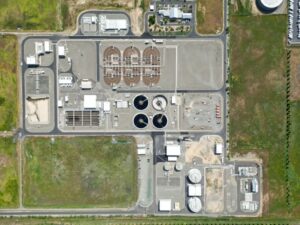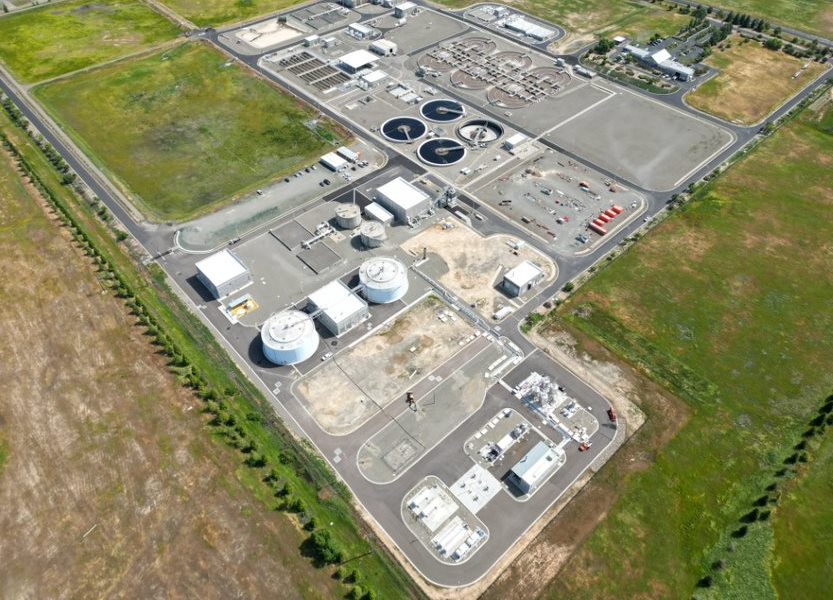As documented in the 2020 book, RECONOMICS: The Path To Resilient Prosperity, the simplest, most powerful strategy for revitalizing almost anything can be boiled down to three words: repurpose, renew, reconnect.
In a significant milestone, the city of Roseville, California has applied that strategy to their wastewater operation. They have repurposed their organic garbage into energy by renovating (renewing) their landfill operation, and reconnecting city residents with their own trash in a circular manner by powering the local garbage trucks with the resulting renewable natural gas.
This groundbreaking initiative to decreases greenhouse gas emissions, lowers energy and water costs and minimizes landfill waste.
The city’s trash and recycling truck fleet is now 100% powered with renewable natural gas (RNG) derived from the digestion of organic waste.
The regional Pleasant Grove Wastewater Treatment Plant (PGWWTP) is owned and operated by the city.
The plant efficiently treats millions of gallons of wastewater daily, safeguarding the health of local streams and rivers.
In addition, it plays a crucial role in benefiting the community by supplying more than half of the one billion gallons of recycled water the city delivers annually for landscaping and industrial purposes.
 The PGWWTP expansion has been under construction since 2020 to increase treatment capacity from 9.5 million gallons to 12 million gallons of wastewater per day to accommodate regional population growth.
The PGWWTP expansion has been under construction since 2020 to increase treatment capacity from 9.5 million gallons to 12 million gallons of wastewater per day to accommodate regional population growth.
As part of the expansion, Roseville has developed an energy recovery project to transform the plant into a waste-to-energy facility capable of producing RNG fuel.
“We have come full circle with managing our integrated utility service to benefit our community,” said Roseville’s Environmental Utilities Director, Richard D. Plecker.
“Through this project, we have the opportunity to generate environmentally beneficial by-products, mitigate the impacts of climate change, comply with regulatory obligations, and safeguard the interests of our ratepayers by stabilizing fuel costs for our solid waste fleet,” he added.
To bring Roseville’s energy recovery vision to reality, the city hired leading environmental engineering and construction services firm Brown and Caldwell to design the innovative renewable biofuel production facility to coincide with expansion works.
The city installed two new anaerobic digesters at the plant to stabilize wastewater solids generated in the treatment process and generate a sustainable fuel source.
A receiving facility was constructed to accept high-strength organic wastes (fats, oils, and greases) directly into the anaerobic digesters, maximizing digester gas production for RNG conversion and diverting up to 12,000 tons of high-strength organic waste per year from landfill.
 Four microturbine cogeneration units produce electricity to help power the gas conversion process and provide heat for the anaerobic digesters.
Four microturbine cogeneration units produce electricity to help power the gas conversion process and provide heat for the anaerobic digesters.
By running its solid waste collection fleet (approximately 47 trucks) via a new on-site RNG fueling facility and ceasing diesel use, the city will reduce greenhouse gas emissions by about 7,000 metric tons of CO2 equivalents per year, equal to planting more than 270,000 trees.
It will also earn credits through the Low Carbon Fuel Standard program as it lowers NOx emissions by five metric tons per year.
Furthermore, generating electricity with microturbines made the project eligible for the Clean Water State Revolving Fund Green Project Reserve, which incentivizes projects that address water or energy efficiency and reduces costs for utility customers.
“We applaud the city for its vision and follow-through in transforming its wastewater treatment process into a highly sustainable, energy-efficient operation,” said Brown and Caldwell Vice President Adam Ross.
“Our team is honored to help position Roseville as a model waste-to-energy pioneer by improving the environmental and financial sustainability of the Pleasant Grove Wastewater Treatment Plant,” he concluded.

